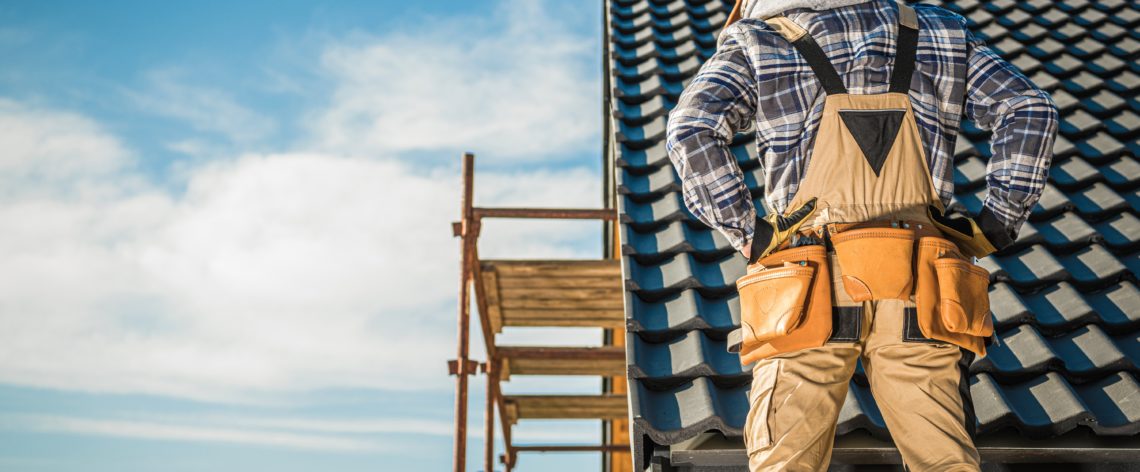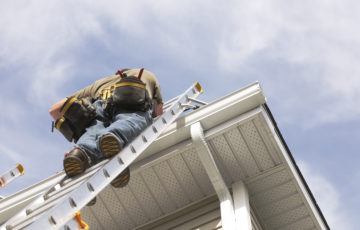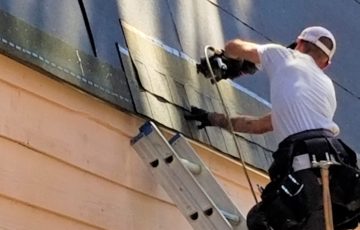Roofing can be a risky business at the best of times. Given the nature of working at heights and constantly being exposed to the elements, roofing may well be one of the riskier trade professions in Australia.
It is a trade in which a healthy awareness and respect for safety and risk mitigation is part of the requirements for success. This is one of the reasons why many roofing business owners set up their roofing contractor insurance, including Public Liability insurance, before they start trading.
Identifying internal and external risks
Business risks can be grouped under two general categories: internal risks, and external risks, each of which requires different approaches and mitigation strategies.
Internal risks
Internal risks are any risks that are created from within your roofing business. It is a risk that is a byproduct that arises during your standard business operations. By their very nature internal risks are generally easier to detect and mitigate than external risks. This is because in theory you may be able to see them coming, especially if you have a keen sense of awareness and can see a few steps ahead.
Some common examples of internal risks to a roofing business may include the following:
- Outdated operating systems;
- Decreased production;
- Ineffective management; and
- Inadequate organisational structure.
External risks
The other side to business risks is external risks, which are a little trickier to spot
and preempt due to the fact that they may creep up on your roofing business before you are even aware of their existence and the threats that may pose.
As well as being harder to predict and avoid, external risks are also much harder to control. Some examples of external risks include:
- Economic downturns;
- Increased interest rates;
- Natural disasters; and
- Industry disruption.
Four common on the job risks for roofers
#1: Falling through skylights or openings
With roofs obviously being up in the air, constantly working at heights is one of the biggest safety risks facing roofers. Height and gravity certainly pose the biggest on the job safety risks for roofers, because even a fall from what seems like a modest height can cause serious injuries when landing on concrete, sharp edges, or other unwelcoming surfaces.
A good rule of thumb is that roofers have fall protection in place any time they are working within six feet of a roof edge. As the business owner or manager of your own roofing business, you can set the safety standards for your business and your employees. Meeting industry standards when it comes to roofing safe work practices is great, but you may even go a step further by exceeding mandated roof safety regulations and make safe work practices a hallmark of how you run your roofing business.
#2: Hidden roofing safety risks
While the most visible safety risks for roofers involve working at heights and gravity, other, less-obvious hazards for roofing businesses include:
- roofers becoming caught or pinned between moving parts.
- coming into contact with heavy machinery such as forklifts or cranes.
- fire hazards, especially the flammability of almost all of the chemicals commonly used by roofers.
- electrical hazards that can come from both power lines and power tools.
- soft-tissue injuries that result from lifting heavy materials, and regular bending and lifting with an improper lifting technique.
#3: Safety risk for residents
Given that sometimes the building that a roofer is working on can remain occupied while the roofing work is in progress, there may also be the need to consider the safety of those inside the building while you are working on it. While these risks may not harm you personally, their ramifications can certainly hard your roofing business and your livelihood.
Openings in a roof can be magnets for safety risks. Roofers can fall through to a building’s lower level, which may be a significant drop and cause serious injury. And even if you or one of your team don’t fall, it’s very easy for a heavy tool or roofing material such as a roof tile, to fall and cause serious injury to a resident in the house below you. Clearly marking existing skylights and treating them as if they were actual open holes will help reduce risk on site.
#4: Risky customers
We’ve all heard the rhetorical “the customer is always right” trope, but sometimes the customer you’re doing the roofing work for can actually be a risk to your roofing business. Is your customer highly demanding and setting unrealistic expectations? Are they an unknown customer and you are not sure if you can trust them? Could they potentially not meet your payment terms?
Some customers are simply unreasonable and demand things that cannot be achieved in the timeframe they’ve given you. Rushing your work and cutting corners just to appease an impatient client can be a major safety risk and something that should be avoided at all costs.
A quick background check or asking them for references from other roofers they’ve worked with, can be a good way to validate that they are a customer that you can trust and are comfortable doing business with.
Maintain high safety awareness at all times
Arguably the single most important safety measure that roofing business owners and their team members can adopt and treat as gospel is constantly maintaining a high level of safety awareness at all times when on a roofing job site.
It can be easy for both seasoned roofers and apprentice roofers to become a little lax on safety, especially during busy jobs or jobs where urgent roof repairs are required, such as after a cyclone or hail storm. But such situations can lead to added risk for roofers, so maintaining high safety awareness is even more important in such situations.
It’s important for roofers to sweat the details at all times when working on roofing jobs. This can be critical because many on-the-job roofing injuries can occur during seemingly routine tasks, such as climbing up or descending down a ladder. Make sure anyone who is climbing a ladder knows, understands, and practices basic ladder safety.
Professional roofing contractors will know well the risks that they can encounter throughout every working day. But business insurance such as insurance for roofing contractors*, also known as roofing contractor insurance, can help you to actively reduce your risk. Visit the dedicated insurance for roofing contractors page on the Public Liability Insurance website to learn more about roofing contractor insurance and get your free quotes.
This information is general only and does not take into account your objectives, financial situation or needs. It should not be relied upon as advice. As with any insurance, cover will be subject to the terms, conditions and exclusions contained in the policy wording. © 2022 BizCover Pty Limited, Public Liability Australia is a business name of BizCover Pty Ltd (ABN 68 127 707 975; AFSL 501769)


